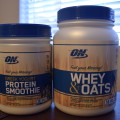A nitro beer is a type of beer containing nitrogen and carbon dioxide with the level of nitrogen being more than that of carbon dioxide (CO2) gas compared to the percentage present in a traditional beer. The percentage of nitrogen in nitro beer is about 70% with that of carbon dioxide being 30%. Nitrogen bubbles create a thick foam that lasts longer. The presence of less CO2 in the beer reduces carbonation giving the beer a velvety smooth texture.
What is Nitro beer?
Nitro beer is a certain brewery of Irish heritage. The beer has become quite common with more craft breweries implementing the nitrogenated method and adding nitro beer to their list of preferred beers.
Brewing of nitro beer
Nitro beer is brewed similar to how any other beer is brewed. However, the main difference is the overall texture of the final product. Nitro beers are packaged with a blend of 70% nitrogen and 30% carbon dioxide giving it a perfect foam and taste. Because nitrogen bubbles are much smaller than carbon dioxide bubbles, this gives your beer a smoother, creamier mouthfeel, and compacts the flavours and aromas of the beer giving it a unique creamy taste.
To serve nitro beer you need pressure. The name “nitro” comes from nitrogen where nitrogen is nitrogenated either prior to packaging in a pressure-sealed kegging system or in-line on the way to a stout faucet which is essential for a well executed nitro pour. Nitro drafts have an internal restrictor plate drilled with small holes. Beer is forced through these tiny holes allowing the dissolved N2 gas in the beer to escape quickly on its way to your glass forcing carbon dioxide out of solution creates the stunning cascade effect and creamy head that forms immediately in the glass.
CO2 which is released during fermentation and as the beer is pumped in during packaging, either canning or bottling produces effervescent and bubbles releasing more aroma that makes nitro beer more refreshing. The addition of nitro gas to carbon dioxide results in the silky, dense head on your pint. Since the glass is not pressurised or cold enough, nitrogen tries to escape and as it rushes down, you notice a fluffy, fragrant foam, form up top, as nitrogen escapes up and out of your glass leaving you with a glass of frothy beer.
There is a high number of craft breweries that produce nitrogenated beers, but due to the complex process involved in the canning and bottling to get a quality final product, most are sticking to draft. The science behind carbonation, balancing the amount of pressure, temperatures and nitrogen and carbon dioxide percentages makes the process hard to achieve.
While traditionally, liquid nitrogen was only used in stout and porters, currently we have IPAs (Dublin-brewed Nitro IPA), Browns, Cream Ales, giving you a lot of options. The flavour of liquid nitrogen blends well with fruited sours, and dessert-forward stouts. The use of nitrogen has also benefited lots of breweries since it has been effective in extending the shelf life of beer and managing dissolved oxygen. With the help of a nitrogen generator system instead of nitrogen gas supplied via gas cylinders you should be able to evaluate both the purity as well as the quantity needed to make a perfectly brewed nitro beer.
Photo by Nadin Sh: https://www.pexels.com/photo/close-up-of-women-eating-steaks-drinking-beer-in-restaurant-15114542/









